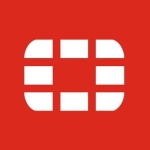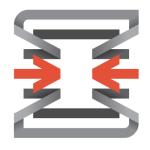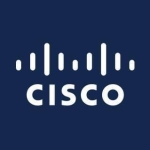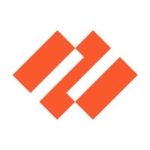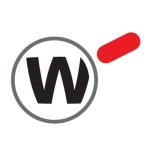What is our primary use case?
We are using Firepower for outbound/inbound traffic control and management as well as for our internal security. We are using it for LAN security and VMware network security. It is a hardware device, and it is deployed on-prem.
Our target is to make our network 100% secure from the outside and inside traffic. For that, we are using the latest versions, updates, patches, and licenses. We have security policies to enable ports only based on the requirements. Any unnecessary ports are disabled, which is as per the recommendation from Cisco. For day-to-day activity monitoring and day-to-day traffic vulnerabilities, we have monitoring tools and devices. If there is any vulnerability, we can catch it. We are constantly monitoring and checking our outside and inside traffic. These are the things that we are doing to meet our target of 100% security.
We have a number of security tools. We have the perimeter firewalls and core firewalls. For monitoring, we have many tools such as Tenable, Splunk, etc. We have Cisco Prime for monitoring internal traffic. For malware protection and IPS, we have endpoint security and firewalls. The outside to inside traffic is filtered by the perimeter firewall. After that, it goes to the core firewall, where it gets filtered. It is checked at port-level, website-level, and host-level security.
We have the endpoint security updated on all devices, and this security is managed by our antivirus server. For vulnerabilities, we have a Tenable server that is monitoring all devices. In case of any vulnerability or attacks, we get updated. We are also using Splunk as SIEM. From there, we can check the logs. If any device is attacked, we get to know the hostname or IP address. We can then check our monitoring tool and our database list. We can see how this attack happened. We have configured our network into security zones. We have zone-based security.
How has it helped my organization?
It integrates with other Cisco products. We use Cisco ASA and Cisco FTD, and we also use Cisco FMC for monitoring and creating policies. For internal network monitoring purposes, we use Cisco Prime. We also use Cisco ISE. For troubleshooting and monitoring, we can do a deep inspection in Cisco FMC. We can reach the host and website. We can also do web filtering and check at what time an activity happened or browsing was done. We can get information about the host, subnet, timing, source, and destination. We can easily identify these things about a threat and do reporting. We can also troubleshoot site-to-site VPN and client VPN. So, we can easily manage and troubleshoot these things.
Cisco FMC is the management tool that we use to manage our firewalls. It makes it easy to deploy the policies, identify issues, and troubleshoot them. We create policies in Cisco FMC and then deploy them to the firewall. If anything is wrong with the primary FMC, the control is switched to a secondary FMC. It is also disconnected from the firewall, and we can manage the firewall individually for the time being. There is no effect on the firewall and network traffic.
Cisco FMC saves our time in terms of management and troubleshooting. Instead of individually deploying a policy on each firewall, we can easily push a policy to as many firewalls as we want by using Cisco FMC. We just create a policy and then select the firewalls to which we want to push it. Similarly, if we want to upgrade our firewalls, instead of individually logging in to each firewall and taking a backup, we can use Cisco FMC to take a backup of all firewalls. After that, we can do the upgrade. If Cisco FMC or the firewall goes down, we can just upload the backup, and everything in the configuration will just come back.
We can also see the health status of our network by using Cisco FMC. On one screen, we can see the whole firewall activity. We can see policies, backups, and reports. If our management asks for information about how many rules are there, how many ports are open, how many matching policies are there, and which public IP is there, we can log in to Cisco FMC to see the complete configuration. We can also generate reports.
With Cisco FMC, we can create reports on a daily, weekly, or monthly basis. We can also get information about the high utilization of our internet bandwidth by email. In Cisco FMC, we can configure the option to alert us through email or SMS. It is very easy.
What is most valuable?
It has a good security level. It is a next-generation firewall. It can protect from different types of attacks. We have enabled IPS and IDS. To make out network fully secure, we have zone-based security and subnets.
It is user-friendly with a lot of features. It has a CLI, which is helpful for troubleshooting. It also has a GUI. It is easy to work with this firewall if you have worked with any Cisco firewall.
With Cisco FMC, we can see the network's health and status. We can create a dashboard to view the network configuration, security policies, and network interfaces that are running or are up or down. We can also see network utilization and bandwidth utilization. We can see if there are any attacks from the outside network to the inside network. We can arrange the icons in the dashboard. For troubleshooting, we can also log in to the FMC CLI, and based on the source and destination, we can ping the firewall and the source.
For how long have I used the solution?
I have been using this solution for three to four years.
What do I think about the stability of the solution?
It is stable, but it also depends on whether it is properly configured or maintained. If you don't apply the proper patches recommended by Cisco, you could face a lot of issues. If the firewall is up to date in terms of patches, it works smoothly and is stable.
What do I think about the scalability of the solution?
There are no issues in terms of the number of users. This is the main firewall for the organization. All users are behind this firewall. So, all departments and teams, such as HR, finance, application team, hardware teams, are behind this firewall. All users have to cross the firewall while accessing applications and websites. They cannot bypass the firewall.
How are customer service and support?
Their support is good. If we have an issue, we first try to resolve it at our level. If we are not able to resolve an issue, we call customer care or raise a ticket. They investigate and give us the solution. If there is a hardware issue or the device is defective, we will get that part as soon as possible. They replace that immediately. If it is not a hardware issue, they check the logs that we have submitted. Based on the investigation, they give a new patch in case of a bug. They arrange for a technical engineer to come online to guide us and provide instructions remotely. They provide immediate support. I would rate their support a nine out of 10.
We have HA/standby devices. We have almost 70 to 80 access switches, and we have 30 to 40 routers, hubs, and other monitoring tools and devices. We keep one or two devices as a standby. We have a standby for each Cisco tool. We have a standby for the core and distribution switches and firewalls. We have a standby firewall. When there is any hardware issue or other issue, the secondary firewall is used, and the workload moves to the secondary firewall. Meanwhile, we work with Cisco's support to resolve the issue.
Which solution did I use previously and why did I switch?
For the past four to five years, we have only had Cisco firewalls. However, for some of the branches, we are using Palo Alto firewalls. It depends on a client's requirements, applications, security, etc.
How was the initial setup?
I didn't do the implementation. We have, however, upgraded to a higher version. From the Cisco side, we get the updates or patches using which we upgrade a device and do the configuration. We register the product model and serial number, and after that, we can download a patch. We also can get help from Cisco. It is easy to migrate or upgrade for us.
What about the implementation team?
We have vendor support. They are a partner of Cisco. When we buy the hardware devices, the vendor has the responsibility to do the implementation and configurations. We do coordinate with them in terms of providing the space and network details such as IP addresses, network type, subnets, etc. We also provide logical diagrams. We monitor the configuration, and after the configuration is done, we check how the network is working and performing.
We have an IT department that includes an applications group, a hardware group, and a security group. There are also Network Level 1, Level 2, and Level 3 teams. The Level 1 team only takes care of the network side. The Level 2 and Level 3 teams do almost similar work, but the Level 3 team is a bit at a higher level in IT security. The Level 2 and Level 3 teams take care of firewalls-level and security-level configuration, policy upgrade, etc. They manage all network devices. Overall, we have around 20 members in our department.
For the maintenance of Firepower, two guys are there. A Level 2 engineer takes care of policy creation and deployment for new networks. A Level 3 engineer takes care of a new firewall, upgrades, and network design and architecture.
What's my experience with pricing, setup cost, and licensing?
When we purchased the firewall, we had to take the security license for IPS, malware protection, and VPN. If we are using high availability, we have to take a license for that. We also have to pay for hardware support and technical support. Its licensing is on a yearly basis.
What other advice do I have?
It is a good product. It is easy to manage, but you need to have good experience and good knowledge, and you need to configure it properly.
Cisco FMC only supports Cisco products. If you have a large network with Cisco firewalls and other vendors' firewalls, such as Palo Alto, you can only manage Cisco products through Cisco FMC. Other vendors have their own management tools.
Most of the organizations nowadays are using the Cisco Firepower and Cisco ASA because of the high level of security. Cisco is known for its security. Cisco provides a lot of high-security firewalls such as Cisco ASA, Cisco FTD, Cisco Firepower. Cisco ASA 8500 came out first, and after that, new models such as Cisco FTD came.
I would rate Cisco Firepower NGFW Firewall a nine out of 10. It is excellent in terms of features, ability, and security. Whoever gets to work on Cisco Firepower, as well as Cisco ASA, will get good experience and understanding of security and will be able to work on other firewalls.
Which deployment model are you using for this solution?
On-premises
Disclosure: My company does not have a business relationship with this vendor other than being a customer.




